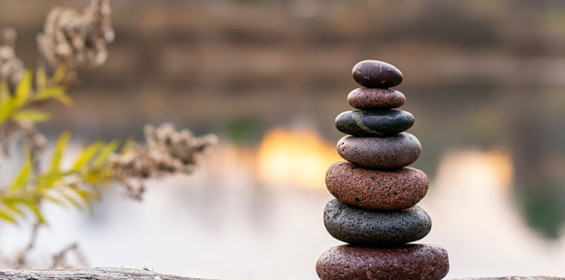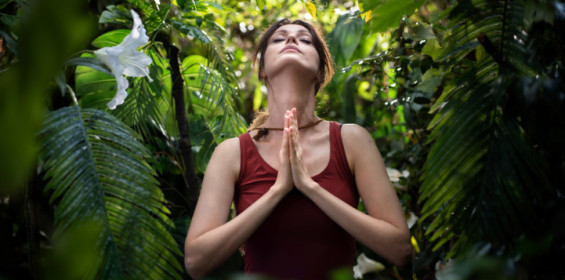
What’s better than attempting to grow a 100-year-old forest in 10 years? Elementary school students are taking the lead! This real-life experiment has great expectations.
Neelam Patil is showing schoolchildren how to stop climate change with real, tangible solutions, all while empowering their voices. She made the TIME Innovative Teachers List 2022 by going green, literally, with her students.
How Green Pocket Forests came to be
In November 2021, Patil spearheaded an effort to plant the first three Miyawaki schoolyard forests in Berkeley, California. Since then, this ultra-dense planting method which uses all native saplings has taken off like wildfire (pun intended).
"I can't say enough about how important this project is for our community and our children,” says Patil. “Most of the time, we felt powerless as we watched the planet get hotter and experience longer fire seasons in California. This is a very specific and progressive way to sink carbon and change the direction of the planet's temperature rise. I'm excited to include this solution in my curriculum this school year and beyond."
After viewing this Twitter video by the World Economic Forum about how Miyawaki Forests could be a “secret weapon against climate change,” Neelam and her students decided to take action.
At the time they were learning about how one football field of trees is cut down every 6 seconds due to deforestation. Her students told her, “We don’t want to learn about it anymore. We want to do something.”
So they set off with the mission of planting a Miyawaki Forest at their school. With the help of the SUGi Project, a nonprofit dedicated to rewilding, and in partnership with Berkeley Schools, three Miyawaki forests were planted in November 2021. Merging science, curiosity, fresh air, and activism, these students started making a difference.
The main benefit, beyond planting the saplings, was seeing children’s faces and minds light up with all of the potential of these forests. Witnessing the explosive growth of nature on their campus has created lifelong memories for them. As they become the next generation of leaders, this experience will impact their decisions definitively.
The Miyawaki Method utilizes all locally collected native saplings which are planted in an ultra dense manner. The saplings compete for light and create a vast underground mycelium network to support each other. These forests can grow up to 10 times faster, store 30 times more carbon, and generate 100 times more biodiversity than conventional forests.
Additional Miyawaki Forest benefits include:
- Drought tolerant – little to no watering required after 18 months
- Low maintenance after planting
- Enhances soil biology and mycelium saturation
- Average of 90% survival rates
- Self-sufficient ecosystem after 3 years
- Forests grow very densely resulting in a higher leaf density per square inch
Putting science into action
Neelam coordinated partnerships between nonprofits, school administrators, community members, parents, teachers, and students. Their efforts resulted in the following impact:
- Planted 3 forests in 6 weeks
- Engaged 200+ volunteers, 40+ teachers, and 1000+ school children
- Planted a total of 3300 saplings (each forest hosts 75 different types of native species)
Green Pocket Forests
Neelam is enthusiastic to partner with Art of Living founder Gurudev Sri Sri Ravi Shankar and the International Association for Human Values (IAHV, also founded by Gurudev), to begin a new initiative called Green Pocket Forests (GPF). The mission is to green urban spaces utilizing the Miyawaki method.
GPF will work with schools and cities to facilitate a community-building planting process, which will result in greener, healthier, and more connected communities.
IAHV’s Asia initiative, Afforestation, has already planted 81 million trees in India, including 22,000 trees using the Miyawaki method. As the Director and Lead Forest Maker, Neelam’s wish is that every school and city in the US shall receive a Miyawaki forest. To connect with Green Pocket Forests, please contact Neelam at neelam.patil@iahv.org.
More about Neelam
Neelam lives and works in Berkeley, California as an elementary school teacher. She graduated from UCLA with a Master’s in Education and the USC School of Cinematic Arts with an MFA in Screenwriting and Directing.
In addition to teaching science, Patil runs a sustainable cooking camp called Bliss Belly Kitchen, which has taught hundreds of youth how to cook and enjoy sustainable farm-to-table vegetarian cuisine.
She met Art of Living founder, Gurudev Sri Sri Ravi Shankar in 2000, shortly after learning SKY Breath Meditation. The transformation in her life was so palpable, that she became certified as an Art of Living teacher, and has since taught breathing and meditation to thousands of youth and adults. She credits her daily breathing practice for all of her successful pursuits.
Anyone who knows Neelam Patil knows she is passionate about making a difference. We heartily congratulate her on receiving the prestigious honor of being included in TIME magazine’s Innovative Teachers 2022 List!
***********************************************************************
Editor’s note:
We invite you to attend a free breath and meditation session to learn more about SKY Breath Meditation, practiced by millions worldwide to find calm, day after day. Click the image below to select a day and time that works best for you.
You may also enjoy reading what Art of Living Founder, Gurudev Sri Sri Ravi Shankar recently shared about Appreciating Trees During the Climate Crisis.




















